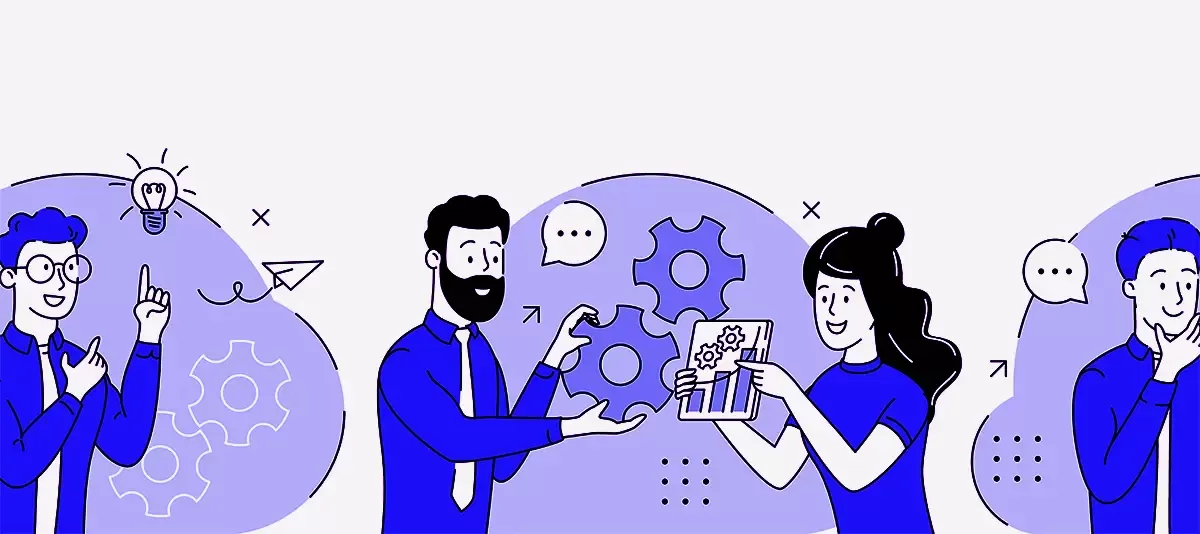Jason Huang, Ph.D., is an Assistant Professor of Mathematics Education and Research at New Paltz State University of New York. Dr. Huang researched The Impact of Technology Artifacts on Mathematics Classroom Discourse. During his webinar with Vosaic, he highlighted how he used Vosaic throughout his research, along with his findings. The webinar with Dr. Huang and Vosaic can be found at the bottom of this article.
Using EdTech to Teach Math
Dr. Huang wants to make an impact on teachers and change the way students learn and view math. His study of Using EdTech to Teach Math found trends in how math is taught and pinpointed the most effective learning strategies.
The study consisted of three discourse types and three artifact types that describe the teaching styles used in the classroom.
Discourse Types:
Teacher-Viewpoint: A teacher lecturing at the front of the class. Typically, more communication between teacher and student, rather than teacher-viewpoint discourse, is encouraged for improved learning outcomes.
Student-Viewpoint: This discourse type is collaboration based, with students coming together with the teacher.
Dialogic Discourse: Students bounce ideas and feedback off each other.
Artifact Types:
Teacher Artifact: Things the teacher creates; writing, art, graphs, etc.
Student Artifact: What the students write and model.
Overlay (Joint) Artifact: The teacher created an artifact and used that as a point of discussion. Alternatively, the student(s) created an artifact and used that as a point of discussion.
The Study
The five participants in the study were pre-service math teachers and graduate students with strong content backgrounds and a common goal of becoming high school or middle school math teachers. The study took place in a math-specific EdTech course the graduate students completed in their last year of school, along with student teaching. Dr. Huang served as their instructor for this year-long course.
The participants designed a technology-based lesson around the discourse and artifact types that Dr. Huang introduced. After they practiced and revised their created lesson, the participants implemented it in their middle and high school math classrooms.
Stay on Top of Important Discoveries
We read case studies and academic journals so you don’t have to. Sign up and we’ll send you the key takeaways.
After Implementation
Following implementation, Dr. Huang recorded the pre-service teachers’ lessons and analyzed their teachings. His subsequent mark-ups in Vosaic were based on the distribution of time spent in the classes…
using technology
without technology
in group/individual work
not using math
Dr. Huang coded the recordings in Vosaic to see the time spent in each category during the lesson.
Dr. Huang analyzed the category of time the class used technology more deeply and divided it into an artifact mediated discourse matrix. To create this matrix, he utilized Vosaic to tag specific moments of the recordings and determine the discourse type and the artifact type of the video clip. After coding the videos in Vosaic, he analyzed what most of the classroom conversation was based around.
If you don't have a Vosaic account for video analysis, automated transcription and research, you can start with a free trial today.
Further Research
Next, Dr. Huang created and conducted six episodes focused on the three discourse and artifact types. These episodes represented six different interactions in their respective code:
Teacher-artifact & Teacher-viewpoint
Teacher-artifact & Student-viewpoint
Student-artifact & Teacher-viewpoint
Student-artifact & Student-viewpoint
Joint-artifact & Teacher-viewpoint
Joint-artifact & Dialogic-discourse
Each episode identified teaching methods that influenced discourse characteristics or opportunities for student learning as mediated by mathematical artifacts. The episodes' purpose is to highlight important artifact features related to the elements of discourse that emerge.
Findings
Through these episodes, Dr. Huang determined that digital artifacts foster productive mathematical discussion. He also found that mathematics discourse is more likely to be based on student ideas and student-generated artifacts. Dialogic discourse, which rarely occurs in the math classroom, occurred almost exclusively when mediated by a joint artifact. Through the six episodes, the different roles of artifacts contribute to the interaction of a mathematics discussion.
Future Studies
After researching and conducting this study, Dr. Huang suggests that further similar studies include more in-service teachers with more experience, teaching years or a higher comfort level. This study shows what a teacher did and how they did it, but not why the teacher took specific approaches.
About Vosaic
Vosaic is a cloud-based video recording and analysis platform used to help teachers, pre-service teachers, and administrators to observe, coach, and self-reflect. Vosaic helps to ensure that every moment is captured in the classroom.



